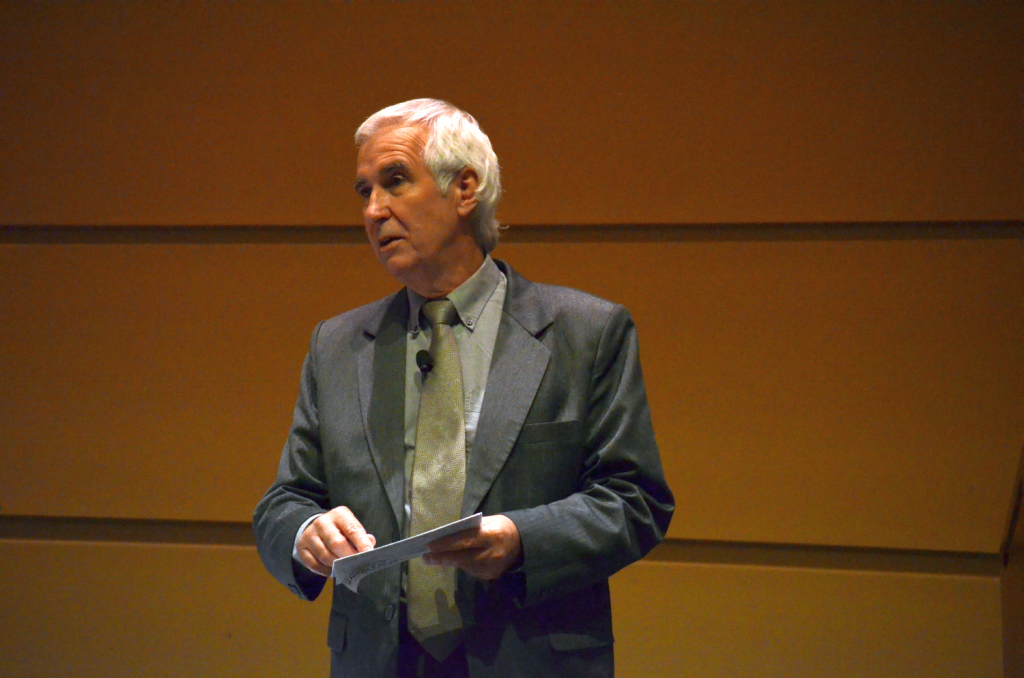Dr. Ian Dunbar is the founder of the Association of Professional Dog Trainers (APDT). He is known as a leader in the humane training movement and is a national advocate for proper puppy socialization. We attended his talk during the APDT Conference in Hartford and have consolidated some of the best points.
Preventing Your Dog From Being Attacked
One behavior that is so incredibly simple its scary can save a client’s dog from being attacked. One of the biggest triggers for fights is hard eye contact from one or both dogs. Asking your dog or a clients dog to turn in front of you and give you eye contact can single-handedly prevent dog fights. This behavior keeps you dog’s eye on you and their back to the other dog. This behavior doesn’t have to be on cue. Simply lure the dog in to the position and continue feeding until the strange dog has passed. This behavior sends the message that your dog is not interested in engaging in any way with the strange dog. What kind of dog is going to instigate a fight with a dog who’s turned his back?
Continuous Training Isn’t Optional
Just like in people, anxieties get stronger as the dog ages. Puppies and children are not born with phobias or fears, but as they get older their anxiety increases. This is the reason clients must understand that training is not a one time commitment – it is a lifetime commitment. It should continue throughout the dog’s life to prevent regression.
5 Reasons Puppies Are Not Socialized Correctly
Dr. Ian Dunbar mentioned that owners have 5 usual excuses for not properly socializing a puppy.
- Fear of disease.
- Fear of overwhelming a puppy.
- Puppy already seems to be well-adjusted.
- Unable to recognize puppy’s warning signs.
- Denial and the expectation that the puppy will grow out of problem behavior.
Dr. Dunbar claims that socialization is very important in preventing dog-dog aggression, but many owners fail at doing this correctly. Owner education is the solution to this.
Differential Classical Conditioning
While classical and operant conditioning are not exclusive from each other, you must give rewards to the dog no matter his behavior in order for classical conditioning to occur. Differential classical conditioning means treats when the dog is showing desired behaviors (no barking, sitting, etc) and verbal praise or lower valued treats when the dog shows a slight reaction such as growling. Here is the breakdown:
- No trigger – No rewards.
- Trigger present, small reaction – Give verbal reassurance. Increase distance in the future.
- Trigger present, no reaction – Jackpot with rewards.
This process allows the trainer to reward desired behaviors more strongly while maintaining classical conditioning during all exposures to the trigger.
Using Secondary Reinforcers For Classical Conditioning
We all know that bringing food into a strange group of dogs can cause issues. Using a secondary reinforcer that is only valuable to your client’s dog and not other dogs will help prevent resource guarding issues. Lots of work must be put into making a secondary reinforcer strong enough to use for classical conditioning, but it is a great alternative to using food in training.
The Jolly Routine
This training technique was founded by Bill Campbell in the 1980s. Stiffness and anxiety fuel reactive dogs. Clients can overcome their anxiety by putting their training to a rhythm. This makes their learning progress more smoothly as well as their dog’s. The jolly routine involved acting very excited and happy when the trigger appears. Dancing is usually involved to truly get in the groove and eliminating anxiety. It is very difficult to feel upset if one is dancing. Dancing and treating are perfect accessories to a classical conditioning protocol.
We enjoyed learning about Dr. Ian Dunbar’s perspectives on dog behavior and his concepts behind treating dog-dog aggression. What do you think about these main points?




